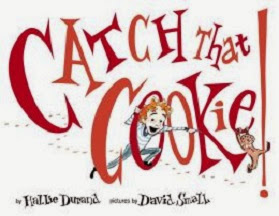
Middle school is like one of those highway restrooms in the middle of nowhere. It's dirty and smelly, and crowded with strange people.
Like the goth kid. He's always in black. He has a pierced ear, eyebrow, and nose; he must set off metal detectors in airports.
When her best friend since Kindergarten splits off to bond with the volleyball girl-jock clique, Ellie feels lost in the crowd at her new middle school. It seems everyone has their thing, but Ellie is a girl who hasn't
found her thing yet. And that's not her
worst problem.
A tray smacks down on the table across from me.
"Can you believe this?" my grandfather demands.
He's wearing navy-blue polyester pants, a button-up shirt with tie, and a V-neck sweater with his tweed jacket. He definitely stands out, fashion-wise.
"Three dollars for a school lunch?" he says. He polishes off his corn dog in a few bites and then looks at my lunch.
"Are you going to eat that?" he asks.
I sigh and push it over.
It seems Ellie's 76-year-old grandfather, with two PhDs in biology, has discovered the genetics of jellyfish regeneration, and being dedicated to reversing aging through science, has done the first human trial on himself. It worked. But since he's now a thirteen-year-old boy, with a massive adolescent appetite and zits to boot, he has to live with Ellie and her mother. And since he's now a minor, he can't drive and he has to be enrolled in school--Ellie's middle school, unfortunately.
Riding the bus and eating lunch with a "cousin" who is her persnickety science-obsessed grandfather is hard enough. But Melvin, whose sudden disappearance as a professor emeritus and loss of access to his university lab has made it impossible for him to continue his work, is determined to get his T. Melvinius specimens and publish what he is sure will be a Nobel-prize winning discovery; and for that he enlists Ellie's help to break into his lab and steal back his jellyfish genes before they expire. But for this caper, Melvin and Ellie need someone suitably stealthy with access to a car and driver. The black-garbed goth boy, Raj, is drafted because he is smart and has an older brother with an inconspicuous car and need for additional income. Grandpa Melvin is certain that with his specimens he can continue his work that will end human aging and save the world. Persuasively, he introduces Ellie to the work of Madame Curie, Salk, Oppenheimer and Einstein, scientists whose discoveries did change human existence.
At first, Ellie is intrigued with the adventure of science--discoveries that can expand human possibilities:
"Scientists never give up... because they believe in the possible." proclaims Melvin.
"The possible?" I ask.
"That it's possible to create a cure for polio. That it's possible to sequence the human genome. That it's possible to reverse aging. That science can change the world." he says.
And I get it.
Ellie agrees to help Melvin complete his work. It is exciting to think that it is possible to end the diseases of aging. That seems like a good thing.
But as she reads more about those scientists Melvin describes, she realizes that there is more than one possible outcome from some of these discoveries. She reads Oppenheimer's words after the first detonation of the atomic bomb.
"We knew the world would not be the same. A few people laughed, a few people cried. Most people were silent."
And Ellie sees what her grandfather in his passion for discovery does not--that an end to human aging would mean that
the world would never be the same, in many, many ways, some not so good. She determines that she cannot be one of those who keep silent.
Three-time Newbery winner Jennifer L. Holm's just published
The Fourteenth Goldfish
(Random House, 2014) is a middle-school novel that has it all, comic family conflicts in which her 13-year-old grandpa tries to tell her mother how short her skirts can be, a believable middle-school social scene with all the usual suspects, action episodes of lab break-ins and car chases, and a plug for science, all entertainingly wrapped around a serious theme of looking at all the
possibilities of scientific discovery. Holm's writing is light-handed, respectful while it pokes fun at its well-drawn characters, but leaving the middle reader with an introduction to what
possibility really means in human life.
Publishers Weekly gives Holm's latest a starred review, and
The New York Times adds "Youth, old age, life, death, love, possibilities and—oh yes—goldfish all come together in this warm, witty and wise novel."
Labels: Grandfathers--Fiction, Middle School Stories, Science Fiction (Grades 5--9)
 The kids are back to school at Mt. Tombs Elementary, assignments are written on the board, and their books are open on their desks, but the kids are still haunted--haunted by the ghost of summers past. If only something fun could happen!
The kids are back to school at Mt. Tombs Elementary, assignments are written on the board, and their books are open on their desks, but the kids are still haunted--haunted by the ghost of summers past. If only something fun could happen!


















